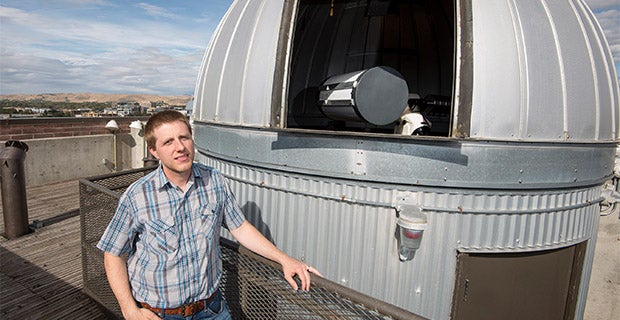The total lunar eclipse, set to take place on the morning of Wednesday, Jan. 31, isn’t nearly as big a deal as the solar eclipse last summer that brought masses of astronomy enthusiasts to Idaho. It’s notable nonetheless.
The eclipse will start at about 5:51 a.m. and end just after 7 a.m. according to Brian Jackson, an assistant professor in Boise State’s physics department.
A lunar eclipse occurs when the moon passes through Earth’s shadow. During such an eclipse, the moon appears rust-colored because red light from the sun is refracted around the Earth by the atmosphere, said Jackson — hence the term “blood moon.”

The eclipse also will take place at a time when the full moon is particularly close to earth, sometimes called a “supermoon.” The moon will, said Jackson, be about 14 percent larger and 30 percent brighter than usual.
Wednesday’s full moon also will be the second full moon in the month of January (the moon also was full on New Year’s Day). That’s why some also will call it a “blue moon.”
You won’t need special equipment to see Wednesday’s triple lunar show on campus. But you might need some luck. The weather forecast calls for clouds.
“These three celestial events aren’t all that rare individually — lunar eclipses happen roughly every six months, supermoons happen every few months, and blue moons happen every two to three years,” wrote Jackson in his astronomy blog, Astrojack.com.
The last time a super blue blood moon occurred was in 1982.